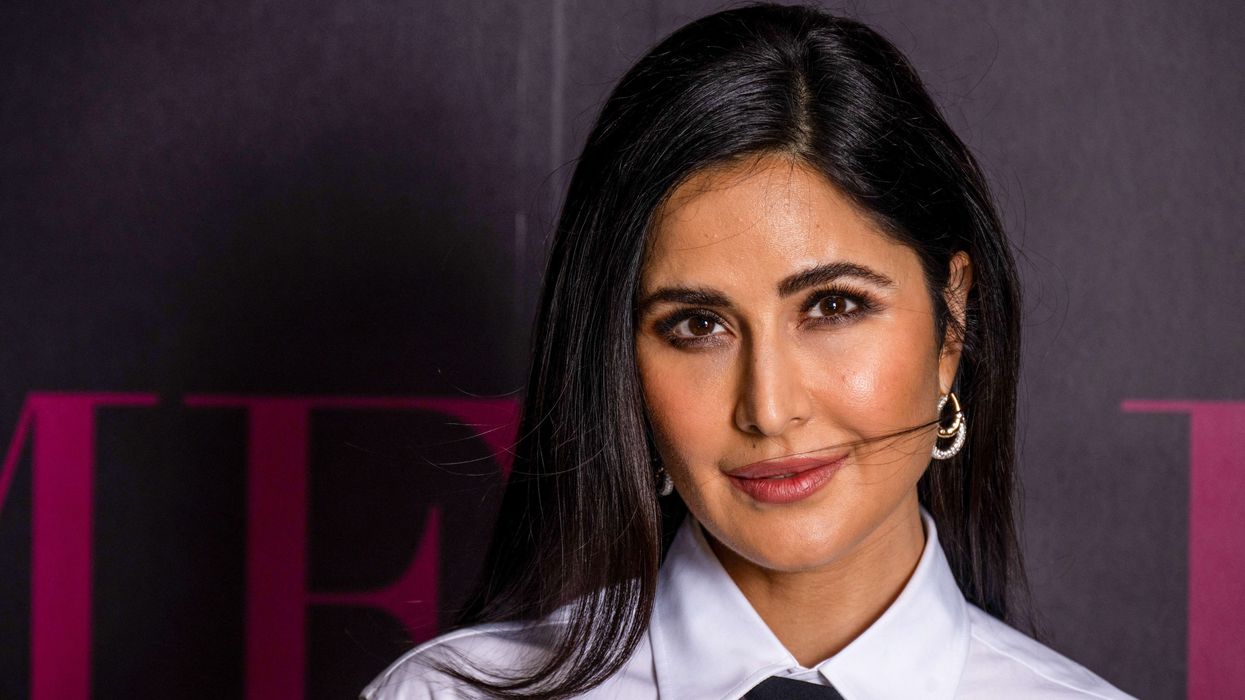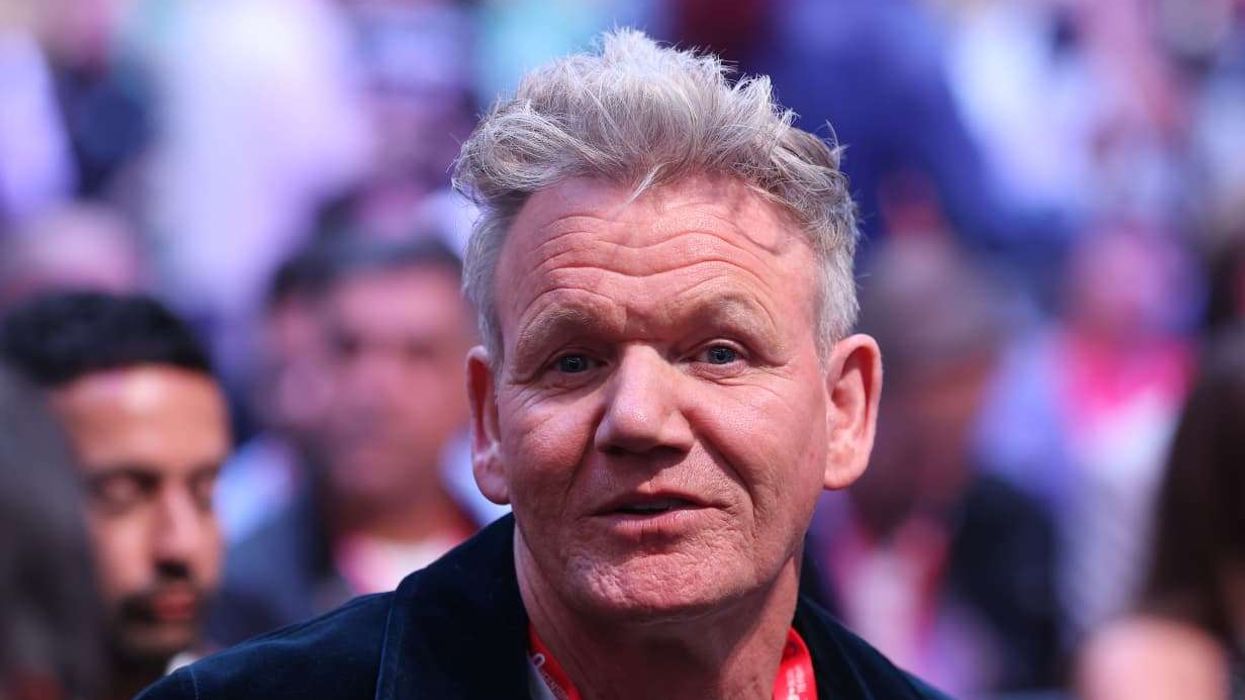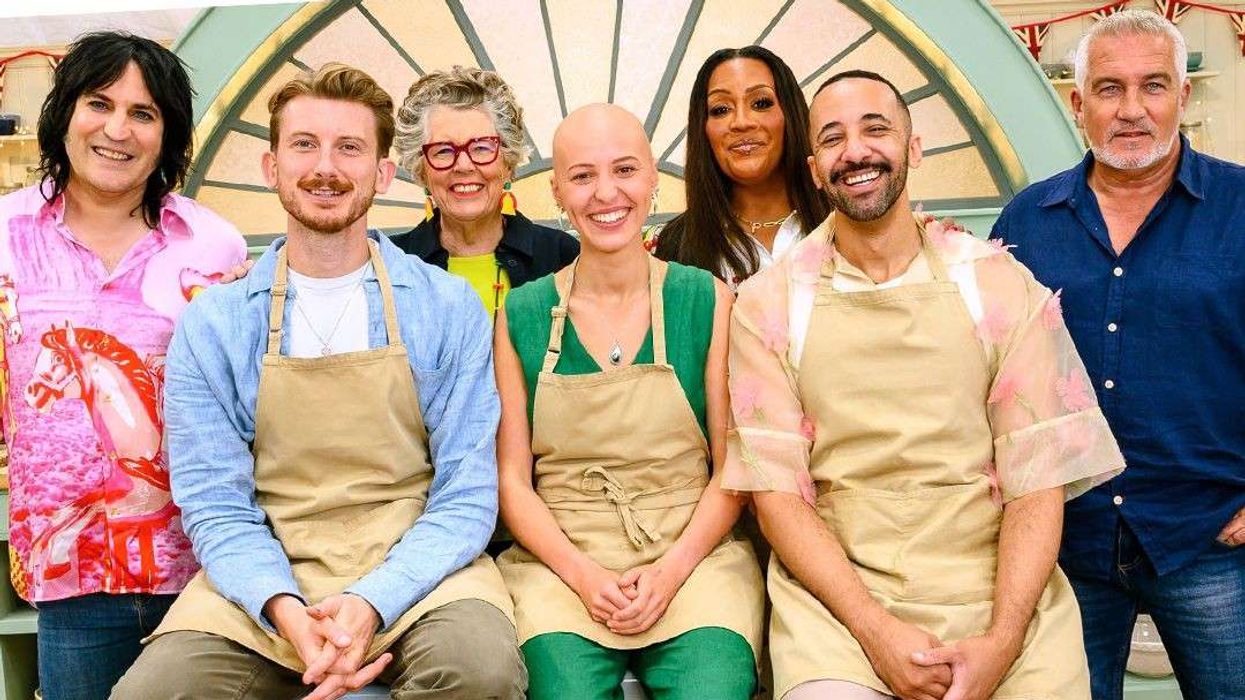ARTIST FUSES NEON LIGHTS, HINDU DEITIES AND BOLLYWOOD GLAMOUR IN COLOURFUL DISPLAY
by AMIT ROY
THE celebrated British Asian artist, Chila Kumari Singh Burman, has spoken to Eastern Eye about how she has decorated Tate Britain in London for Diwali with a swirl of neon lights, Hindu deities, intrepid royalty from Indian history and Bollywood glamour.
Asked by Tate Britain, one of the country’s most popular museums, whether she would like to undertake the annual “winter commission” starting in mid-November, it was Burman herself who suggested that the timing coincided with the festival of Diwali.
The artist’s idea of turning the “winter commission” into a celebration of Diwali because of the coincidence in the timings was warmly endorsed by the director of Tate Britain, Alex Farquharson, who said: “Although our museums and galleries remain closed, I’m delighted that we are still able to unveil Chila Kumari Singh Burman’s new commission. I hope this spectacular transformation of Tate Britain’s façade can act as a beacon of light and hope during dark lockdown days and bring joy to all those who live or work nearby.”
The installation, which can be seen from across the Thames, will remain on view right through Christmas until at least January 31 next year. It is hoped the colourful display will lift the spirits of patients in St Thomas’ Hospital.
Burman said of her nod to the Hindu pantheon: “I have got Lakshmi, Ganesh, Hanuman and bows and arrows to symbolise the Ramayana.”
She has also gone back into Indian history to the brave queen who was a prominent figure in the rebellion against British rule in 1857 and also made use of popular culture: “I’ve done a whole collage of Jhansi ki Rani on one column that is wrapped in vinyl and Bollywood girls on another.”
As to how she managed to decorate the highest reaches of the building, Burman said: “Cherry pickers were used rather than cranes.”
At the very top is a statue of Britannia with a Union flag, but Burman has superimposed that with a depiction of the Goddess Kali, alongside the words, “I’m a mess.”
Burman joked: “That’s how I and so many other people feel when we get up in the morning, but it’s also a political message to reflect the state of Britain today.”
She has characterised her work as “messy, surreal, abstract, zen, feminist, anarchic, figurative, textured, layered and all blinged-up with a razor-sharp political awareness”.
The artist, who likes to smuggle provocative or political messages into her work, took note of “all this discussion about systemic racism and colonialism”.
She used silicon neon lights which are flexible and could be bent into the shapes she wanted rather than ones made in glass.
The museum also pointed out: “In the centre of the installation is a depiction of the third eye, suggesting the route to higher consciousness.”
Incidentally, the van at the bottom is a tribute to her late father who was an icecream vendor when he arrived from the Punjab in India in the 1950s.
This is the fourth in Tate Britain’s series of outdoor commissions to mark the winter season, following works by Alan Kane in 2017, Monster Chetwynd in 2018 and Anne Hardy in 2019.
Burman’s Remembering a Brave New World has been curated by Clarrie Wallis, senior curator at Tate Britain.
The mayor of London, Sadiq Khan, also paid tribute both to Burman and to Tate Britain: “Even when its doors are closed, Tate Britain is able to make a powerful cultural impact on our capital with this bold new work. Chila’s colourful tribute to her Punjabi and English heritage is a great way to mark Diwali’s celebration of light over darkness and will be a symbol of hope during these difficult times.”
Born in Liverpool, Burman’s practice is often inspired by her childhood, according to the museum, which also said: “In this new commission, Indian myths and customs are combined with memories of family visits to the Blackpool Illuminations and her parents’ ice-cream van.
“The façade is resplendent with neon sculptures, including Hindu deities such as Lakshmi, the goddess of wealth and purity, and Ganesh, the god of prosperity. Hanuman, the monkey god, and several illuminated animals, including a life size tiger and a peacock, are juxtaposed with luscious lips eating an ice cream cornet and winter snowflakes.
“The installation also includes the figure of Rani (queen) of Jhansi, a fierce warrior and symbol of Indian resistance after she led a battle against the British in 1857. The figure of Britannia is also fused with the neon image of Kali, the Hindu goddess of liberation and power.
“The opening of the Winter Commission coincides with Diwali, the Festival of Light, celebrating new beginnings and the triumph of good over evil. Remembering a Brave New World draws inspiration from personal, social and mythological histories, while offering a sense of hope for the future.
“The commission references mythology, Bollywood, radical feminism, political activism and family memories, bound up in a celebration of neon light and swirling colour.”
The museum said that “Burman is celebrated for her interdisciplinary practice which spans printmaking, drawing, painting, installation and film. Drawing on feminist perspectives and her Punjabi heritage, Burman’s work explores the heterogeneous nature of South Asian identity within a British context while challenging stereotypical notions of Asian women.”
Chila Kumari Singh Burman’s Remembering a Brave New World is at Tate Britain until January 31, 2021




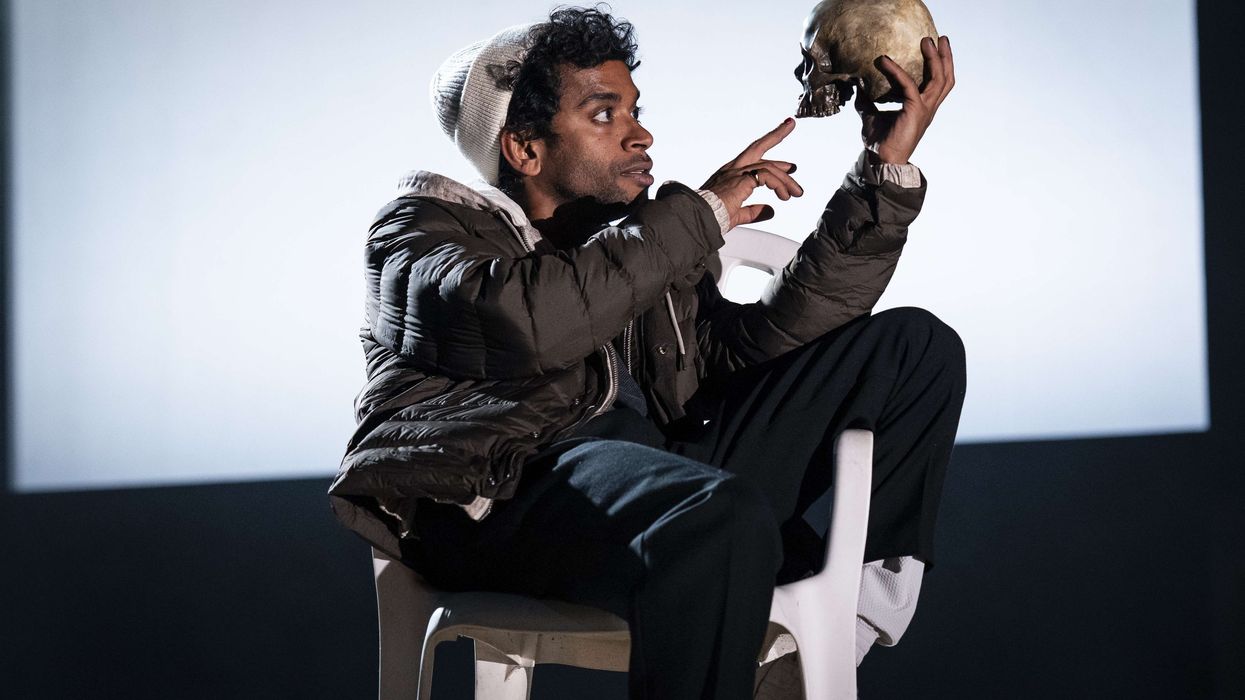
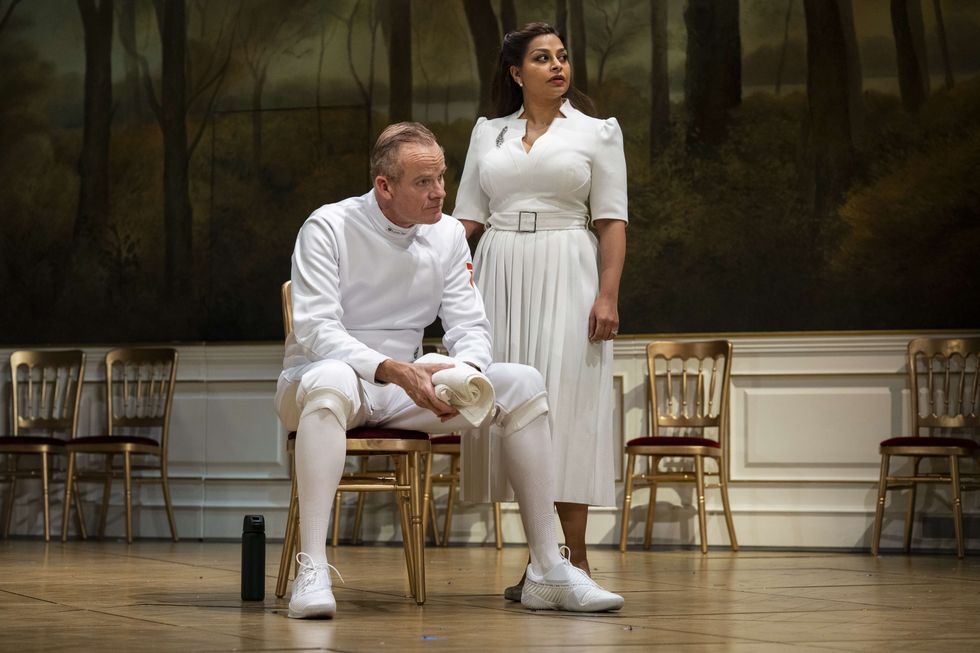 Alistair Petrie (Claudius) and Ayesha Dharker (Gertrude) Sam Taylor
Alistair Petrie (Claudius) and Ayesha Dharker (Gertrude) Sam Taylor 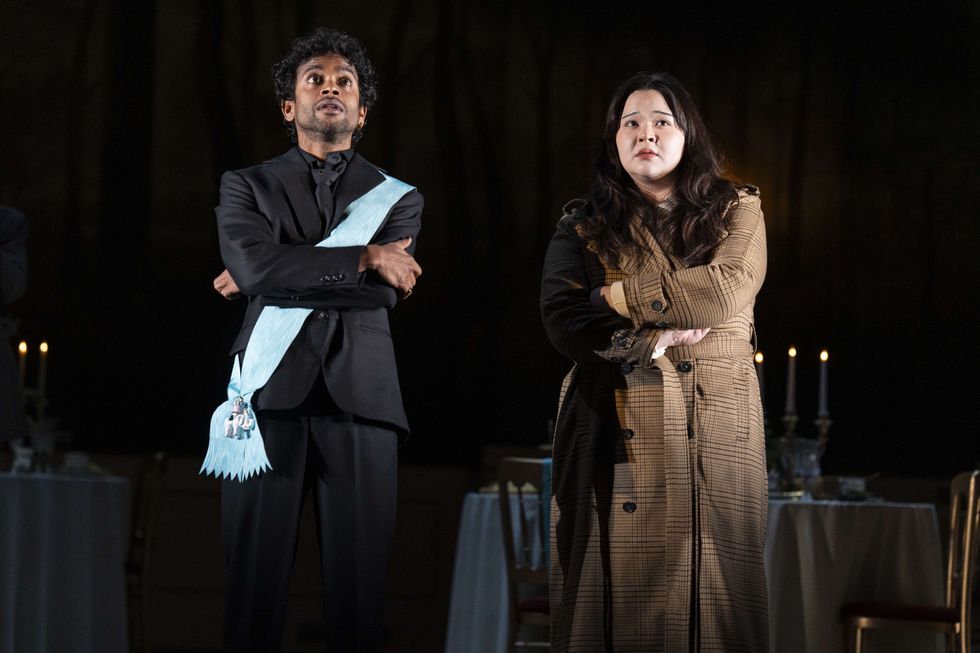 Hiran Abeysekera (Hamlet) and Tessa Wong (Horatio) Sam Taylor
Hiran Abeysekera (Hamlet) and Tessa Wong (Horatio) Sam Taylor 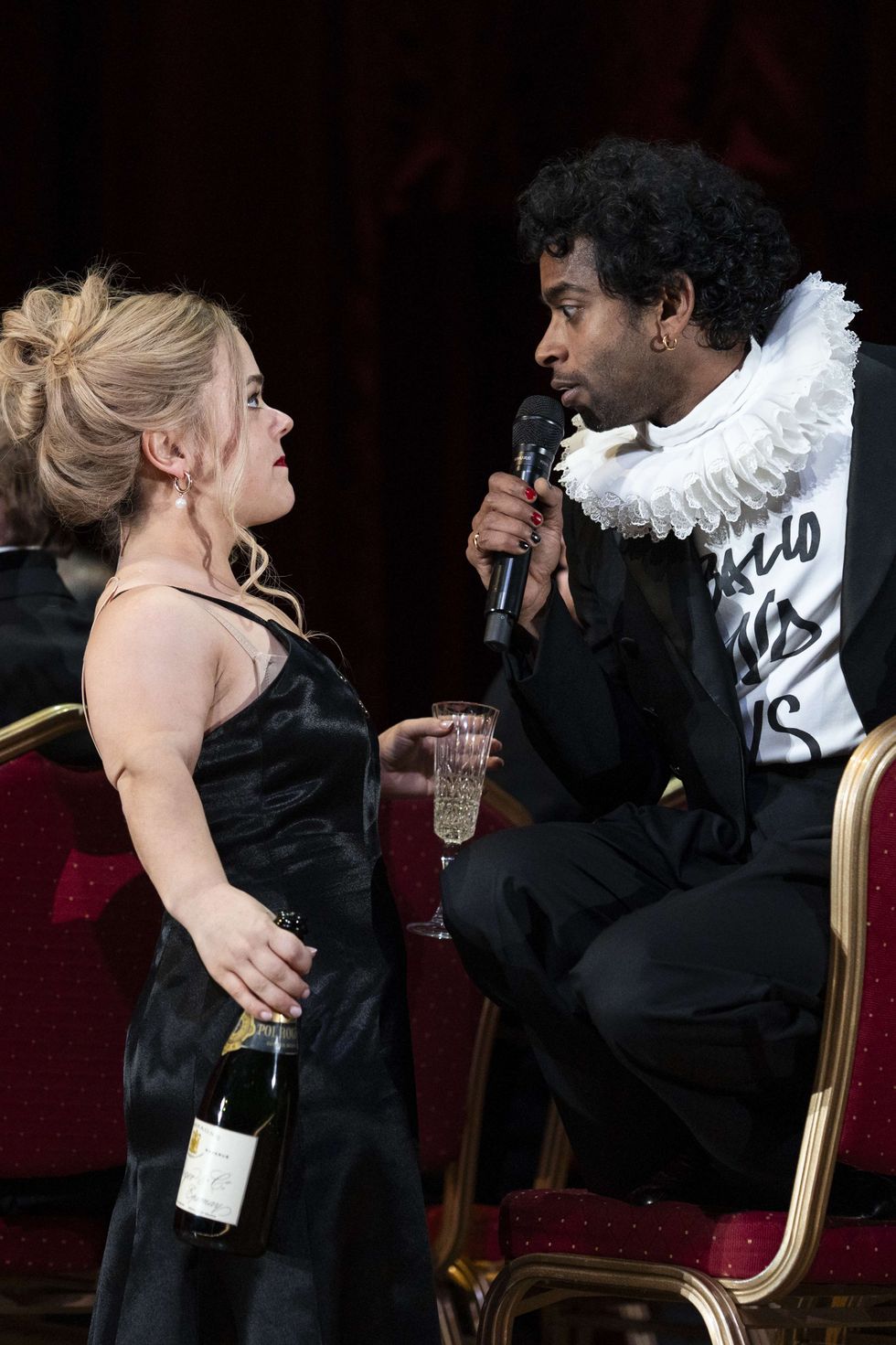 Francesca Mills (Ophelia) and Hiran Abeysekera Sam Taylor
Francesca Mills (Ophelia) and Hiran Abeysekera Sam Taylor 
